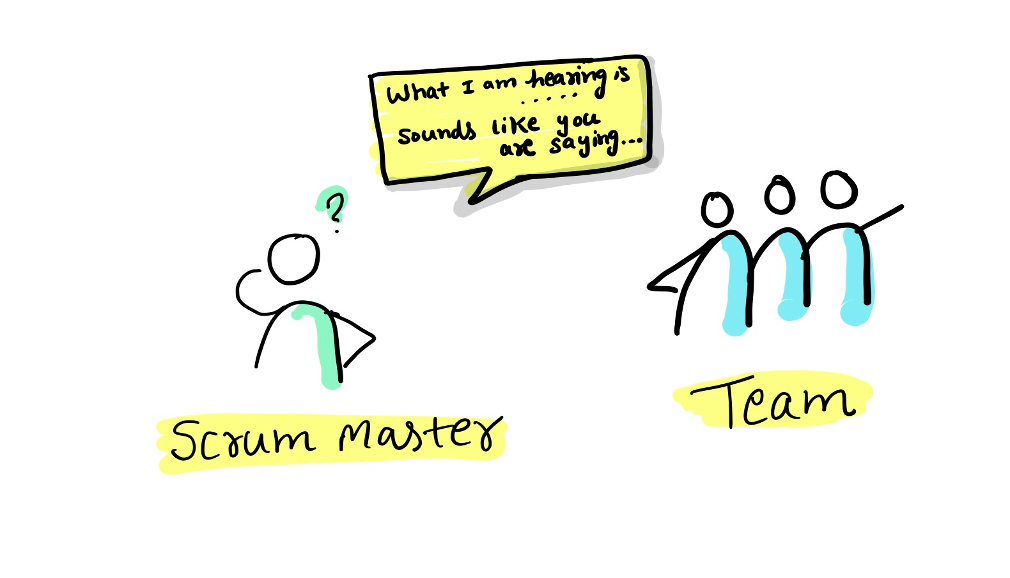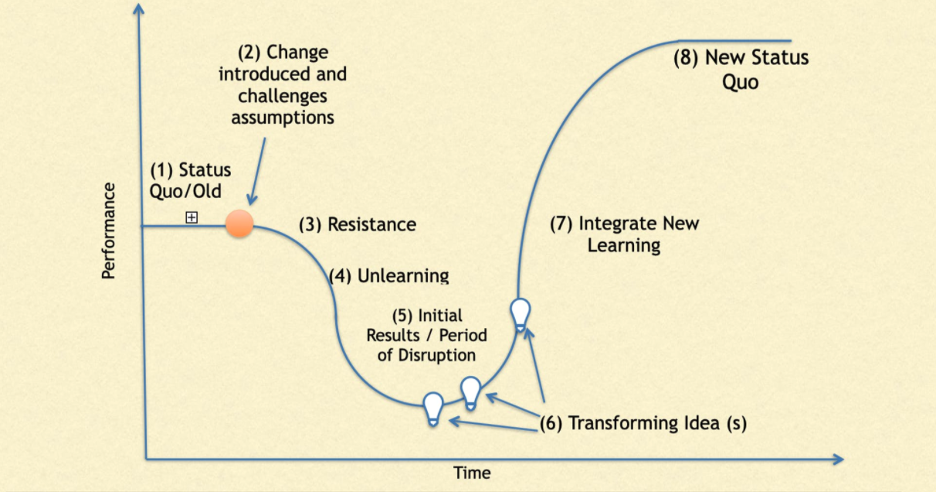ScrumMasters rely on observational skills, but does that mean we only use vision? What happens when we are all remote? Can we leverage other senses to “observe” how teams are surviving (or thriving)? We may not be able to sit together with our team for a long time, and it may never be the same due to the long-term effects of the coronavirus. What skills might we adapt or create for virtual teams? And, how can we still reflect back on the observations so the team can decide how to improve?
Listening as Primary Skill
First, listening becomes a primary observation skill with online teams. Listening occurs on many levels, but it should always be “active listening.” Active listening involves full concentration to hear the speaker, and the speaker knows you are listening to what they say. This skill develops with continuous practice. Understanding the words used, tone of voice, and what may not be spoken can tell the skillful ScrumMaster other ways to assist their team.
For example, in sprint planning, a developer doesn’t ask any questions but nods his head. Others may assume he understands the backlog item. Later, when the developer is assigned the story, he may ask many questions. Were they listening during sprint planning? What might have been a distraction?
To avoid these types of challenges, you may ask questions that don’t have simple answers.
For instance, in the above-mentioned situation, a ScrumMaster may ask the developer: “Do you understand the backlog item?” and get a “Yes” answer. It won’t avoid clarifying the assumption well. Instead, the ScrumMaster should ask an open-ended question such as “Would you explain what’s your understanding of this backlog item?” or “Based on what we’ve discussed, what challenges do you anticipate?”
Open-ended questions require careful thought. One type, known as reflective coaching questions, help to mirror back observations. For example:
At what point did you notice…?
Describe what happened when...?
Tell me more about…
These types of questions help everyone share the observations and insights about the work.
Paraphrasing is another technique of active listening and allows a listener to summarize what they have heard from the speaker in their own words. It helps the listener confirm they understand what the speaker says.
For example, while facilitating retrospectives, it becomes important to paraphrase the speaker’s challenge before asking further questions. In this way, you make sure that you are asking the right question to generate insights into the problem.

With these types of questions, we may also start to explore the context of the issue being discussed.
Observations on Context
Second, we may need to make observations about the context surrounding a change to determine how team members process the change. For instance, do they have a good balance when they live at work and work at home as remote team members? Can they accept help when a change has been forced upon them, such as when the coronavirus forced many out of the office with little warning? Do they accept new ideas or does the stress of the change make it difficult for them to let go of assumptions?
A tool like the Satir Change Model reveals how the team navigates the change and provides clues on the impact of their context. As shown in the diagram, each stage of the model shows how each team member individually navigates the change. Once things move from (1) Status quo to (2) The change being introduced, each team member could be at any of the following stages:
3. Resisting by holding onto old assumptions
4. Letting go of those assumptions (unlearning)
5. Struggling with the change because they don’t have a model or assumptions to deal with the new context
6. Discovering new ideas (either individually or from other team members) that transform their thinking
7. Integrating their new ideas into their way of working through experimentation
8. Deciding on their new standard ways of working based on the new ideas
A ScrumMaster may privately note where they feel each team member sits on the change curve based on their observations. Optionally, the ScrumMaster may ask each team member to indicate where they are on the change curve in a retrospective or an anonymous poll.

Rarely will everyone be at the same point on the curve during the change process. It becomes important for the team to be aware of where fellow team members sit on the change curve to determine if they need help, time to think through the change on their own, or if they are ready to settle into new ways of working. You can read more about the Satir Change Model at https://www.markkilby.com/navigating-the-change-curve-basics/.
Observation Log
Third, when ScrumMasters learn to reflect back, they may use this new tool of observation too often. ScrumMasters should learn when and how they can create the space for self-learning for the team. Sometimes a ScrumMaster consciously takes a step back to help the team take their own actions in the improvement journey. An observation log becomes another tool for the ScrumMaster to notice observations about the team and share it with the team at an appropriate time. Consider the sample observation log below.
Date of Meeting or Discussion | Behavior What are the key behaviors of the team? (team’s energy, collaboration, openness, etc.) | Action Key reaction/ comment from the team | Insights SM’s insight about the discussion |
Common Patterns (Find out any common behavioral or action patterns): 1. 2. 3. | |||
Action Plan (When and how you would reflect the patterns to the team to bring improvement. Some common events to bring reflections are one-on-one coaching sessions, group coaching sessions, or retrospectives: | |||
Observational skills remain critical even for remote teams and their ScrumMasters. Other senses and skills help ScrumMasters notice what their remote team may be struggling with.
The ScrumMaster notices what team members say and how they respond to changes in their context. Based on that, ScrumMasters can share their observations with the team.
Amplifying listening skills, using frameworks like the Satir Change Model, and capturing and sharing observations in a log help remote ScrumMasters use the superpower of observation in building a high performing team.



User Comments
Hi Mark,
This is a great article on how to foster communication between the team and the use Agile lifecycle for product development. In most teams the Developer has a central role as they sign up for work usually backlog item to get started with the Sprint. Therefore, I agree that it can be hard, even more challenging with remote a team, since the onset of the pandemic most teams are more than likely inundated. So, to better the communication between a remote team this approach can be used to alleviate assumptions and lead to team fusion between the Scrum Master, Developers, and Test when active listening is used for Sprint assignments. This ensures that each concern has been heard and is being applied systematically to the Sprint. Thank you for your contribution to the Agile community.
Best Regards,
Everett Dean
Certified Test Foundation Level CTFL
Thanks for the comments Everett. That's why Savita and I wanted to pair up on this topic.
When we talked about challenges we were seeing with current remote teams during the pandemic (and before), it was truly listening to each other. This includes paying attention to what is said and what is not said. Be curious about both.
Mark
This is a fantastic post on using the Agile lifecycle for product development and fostering team collaboration. The Developer typically plays a key role in teams when they sign up for work, typically backlog items, to begin the Sprint
You made some very good points here.